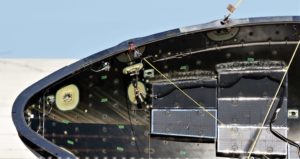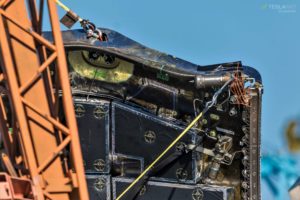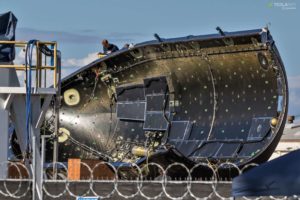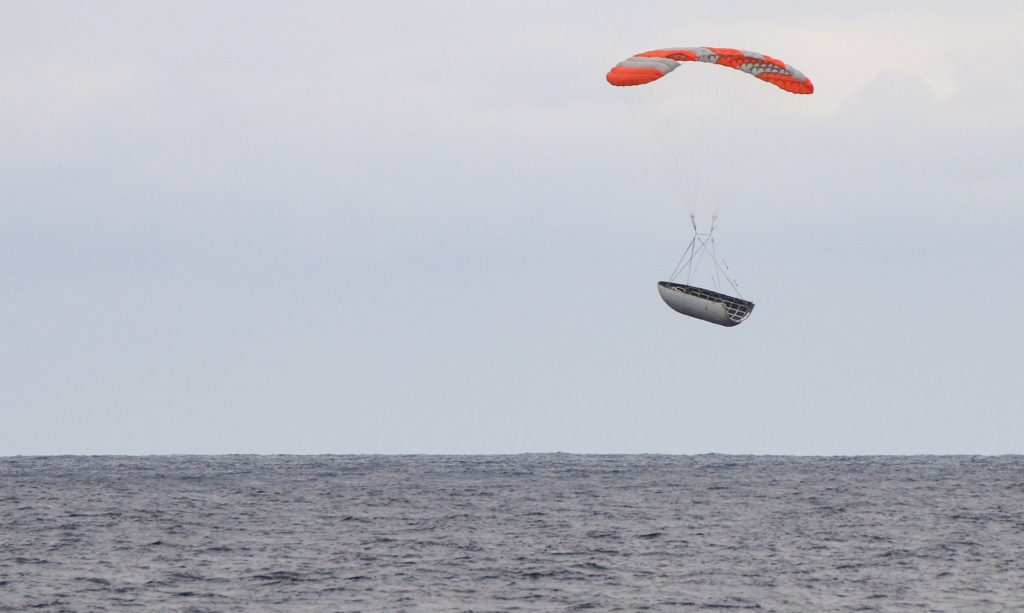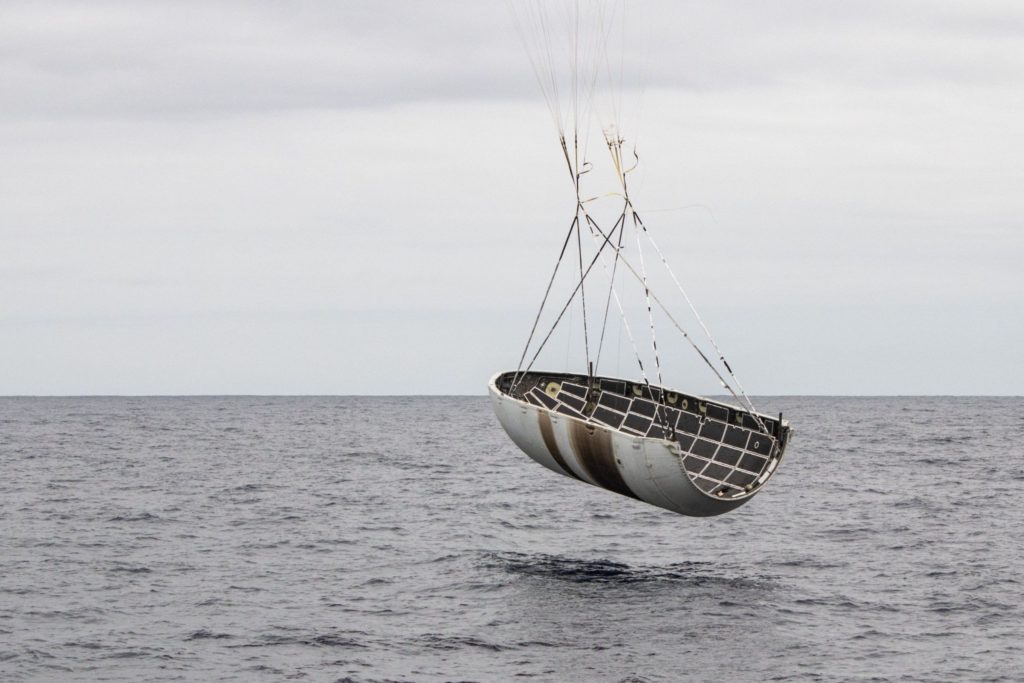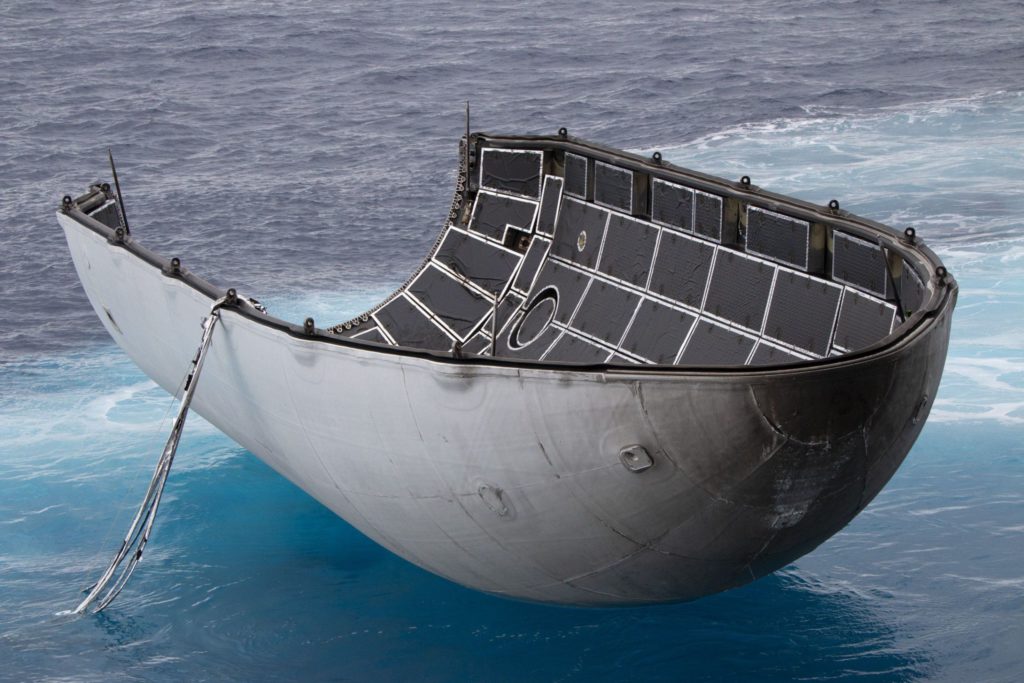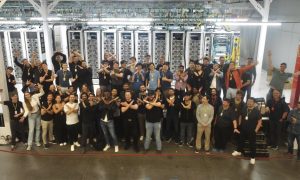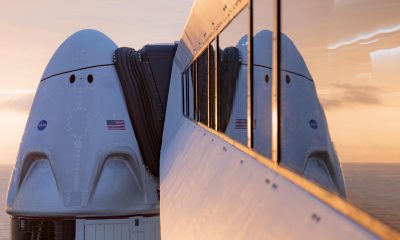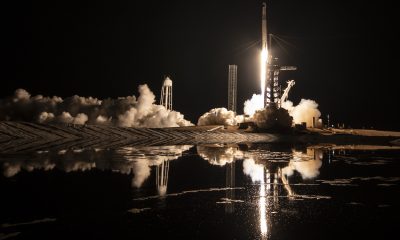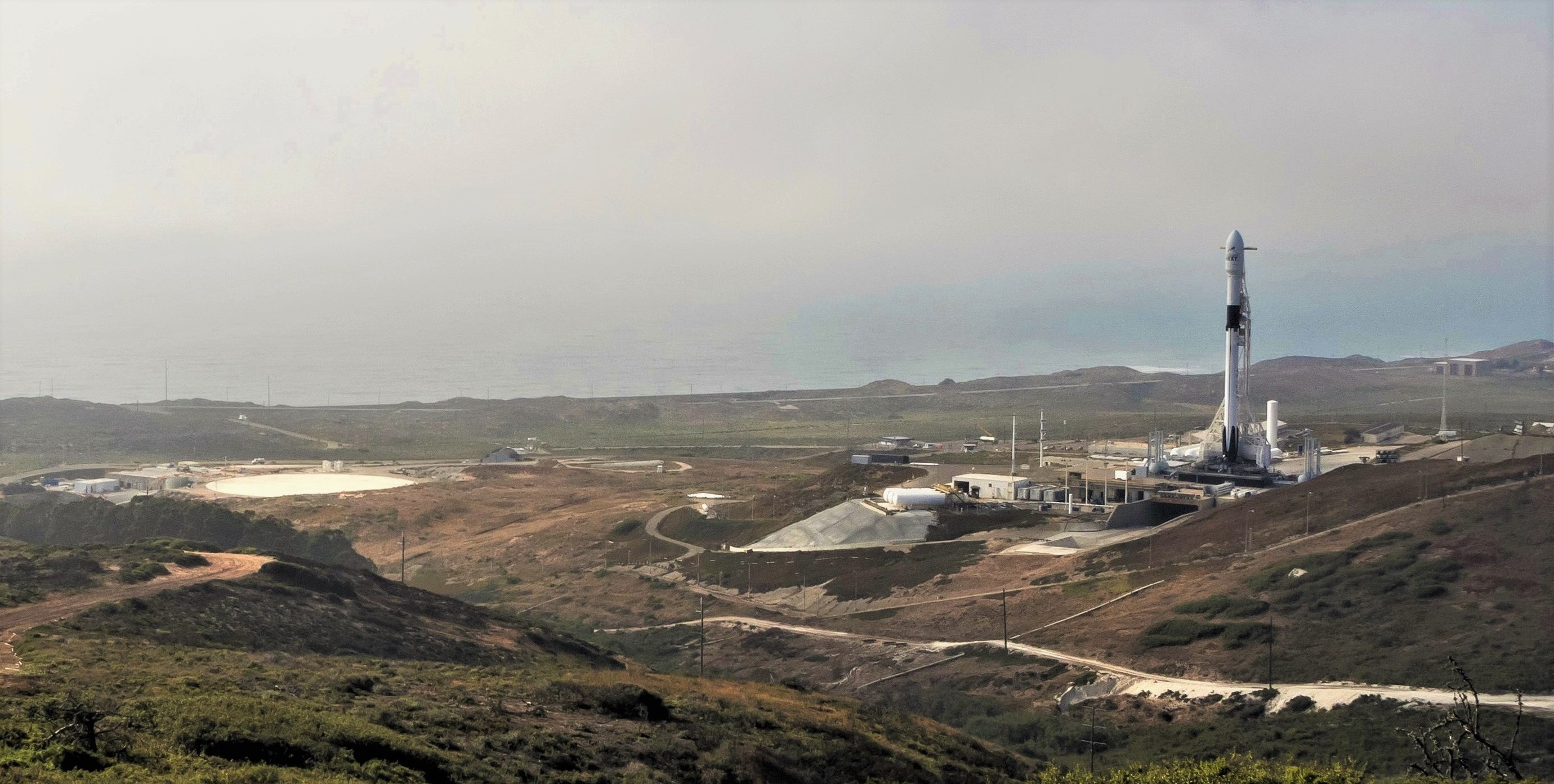

SpaceX
SpaceX’s Falcon 9 Block 5 ready for first Return-To-Launch-Site booster landing
Falcon 9 B1048.2 is vertical at SpaceX’s Vandenberg Space Launch Complex 4 (SLC-4) facilities ahead of the rocket’s second launch, targeted at 07:21 PM PDT, Oct. 7 (02:21 UTC, Oct. 8). A bit less than ten minutes after liftoff, B1048 will attempt a Return-To-Launch-Site (RTLS) landing just ~1400 feet from the launch pad.
Meanwhile, Mr. Steven is ready to depart Port of San Pedro in support of Falcon fairing recovery operations soon after liftoff, the vessel’s fifth attempted catch in ~12 months of active service with SpaceX.
Falcon 9 B1048 and SAOCOM-1A as of 10:50 PM PDT. Photo courtesy of @_TomCross_ ?? pic.twitter.com/vlaB1fkk5p
— Eric Ralph (@13ericralph31) October 7, 2018
A few hours after the vessel’s four arms and net were fully installed (the first time in more than six weeks), SpaceX technicians performed a series of last-minute tests with a Falcon fairing half placed on his net to verify that its mechanised rigging was working as intended, while also double-checking data connectivity between the fairing and its target (the net). Pre-launch checkouts largely completed, Mr. Steven now has to travel a short 200 miles to reach the region where SpaceX expects Falcon 9’s fairings to be recovered.
- On September 4th, SpaceX performed a mechanical test of a fairing’s separation mechanism, in this case used to hold a (detachable) lifting harness. (Pauline Acalin)
- Note the taut, yellow ropes connected to the fairing at its original serparation connector ports. (Pauline Acalin)
- After an audible “3..2..1”, a sharp noise much like compressed gas being released was followed by a clang as the harness dropped. (Pauline Acalin)
Of Falcons and fairings
It may feel quite different watching in real time, but SpaceX has made a huge amount of progress towards successful and routine fairing recoveries over the course of the last year and a half. Before the company became truly famous (and popular), more than two years (2013-2015) and a dozen distinct attempts were spent patiently learning how to recover Falcon 9 boosters, ranging from the first launch of Falcon 9 V1.1 (CASSIOPE, late 2013) to multiple instances where boosters exploded in spectacular fashions on drone ships Just Read The Instructions and Of Course I Still Love You after SpaceX began true landing attempts.
In fact, the first intact recovery didn’t even take place on a drone ship after years of extensive testing at sea – in December 2015, after separating from its Orbcomm-2 satellite constellation payload, Falcon 9 B1019 became the first booster recovered by SpaceX in one piece, landing almost flawlessly at the company’s just-finished Cape Canaveral landing zone, known as LZ-1. Several months later, SpaceX successfully recovered its first Falcon 9 at sea, landing a booster on OCISLY shortly after launching the CRS-8 Cargo Dragon mission, although several more failures or near-failures followed as recovery technicians and engineers worked through a diverse and unpredictable series of challenges as they arose.
Rocket recovery: it’s not easy
Even in 2018, SpaceX unintentionally expended Falcon Heavy’s center core, demonstrating that even three dozen successful Falcon 9 and Heavy booster recoveries are not necessarily enough to shine light on or predict all possible modes of failure. Around 7:21 PM (PDT) today, barring a scrubbed launch attempt, the already-flown Falcon 9 booster B1048 – refurbished from landing to launch in just ~74 days – will likely launch and land once more, and most of the world wont even blink and eye. In the eyes of those that don’t or haven’t followed SpaceX obsessively, rocket booster recovery and reuse is to some extent already perceived as routine, logical, and inevitable less than three years after the technology’s first true Kitty Hawk moment.
- One half of SpaceX’s Iridium-6/GRACE-FO just moments before touchdown on the Pacific Ocean. (SpaceX)
- Close. (SpaceX)
- Hans Koenigsmann was extremely excited about the condition of this particular fairing half, and included this photo in his IAC 2018 keynote. (SpaceX)
The point of this brief SpaceX history lesson is to emphasize that fairing recovery is an extremely young technology, even for SpaceX. Before Mr. Steven swooped into existence, SpaceX had begun attempting to softly land payload fairings in the ocean around the start of 2017, and Mr. Steven famously returned to Port of San Pedro with an intact (but unreusable) fairing half in March 2018 after successfully launching Earth-imaging satellite PAZ. Comparing historical apples to present-day oranges, it may be safe to assume that fairing recovery’s Orbcomm-2 moment – Mr. Steven’s first successful catch – is already on the horizon.
In the meantime, it never hurts to remind oneself that – vicarious frustrations aside – observers are likely watching history unfold in real-time once again. SpaceX’s SAOCOM-1A launch webcast will begin around 7PM PDT – 15 or 20 minutes prior to launch – and can be found at the link below.
For prompt updates, on-the-ground perspectives, and unique glimpses of SpaceX’s rocket recovery fleet check out our brand new LaunchPad and LandingZone newsletters!
News
SpaceX’s Crew-11 mission targets July 31 launch amid tight ISS schedule
The flight will lift off from Launch Complex 39A at Kennedy Space Center in Florida.
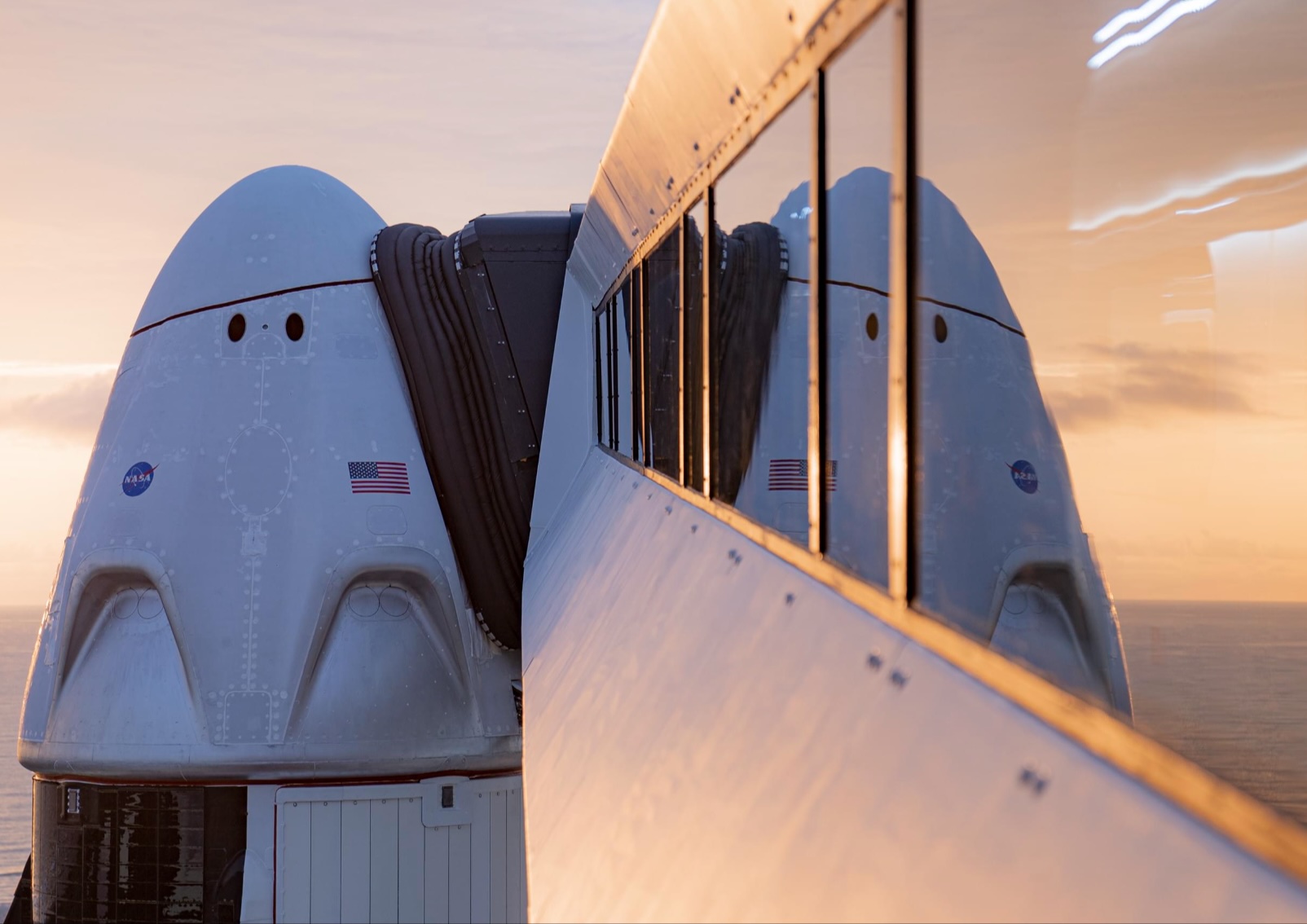
NASA and SpaceX are targeting July 31 for the launch of Crew-11, the next crewed mission to the International Space Station (ISS). The flight will lift off from Launch Complex 39A at Kennedy Space Center in Florida, using the Crew Dragon Endeavour and a Falcon 9 booster.
Crew Dragon Endeavour returns
Crew-11 will be the sixth flight for Endeavour, making it SpaceX’s most experienced crew vehicle to date. According to SpaceX’s director of Dragon mission management, Sarah Walker, Endeavour has already carried 18 astronauts representing eight countries since its first mission with NASA’s Bob Behnken and Doug Hurley in 2020, as noted in an MSN report.
“This Dragon spacecraft has successfully flown 18 crew members representing eight countries to space already, starting with (NASA astronauts) Bob (Behnken) and Doug (Hurley) in 2020, when it returned human spaceflight capabilities to the United States for the first time since the shuttle retired in July of 2011,” Walker said.
For this mission, Endeavour will debut SpaceX’s upgraded drogue 3.1 parachutes, designed to further enhance reentry safety. The parachutes are part of SpaceX’s ongoing improvements to its human-rated spacecraft, and Crew-11 will serve as their first operational test.
The Falcon 9 booster supporting this launch is core B1094, which has launched in two previous Starlink missions, as well as the private Ax-4 mission on June 25, as noted in a Space.com report.
The four-members of Crew-11 are NASA astronauts Zena Cardman and Mike Fincke, as well as Japan’s Kimiya Yui and Russia’s Oleg Platonov.
Tight launch timing
Crew-11 is slated to arrive at the ISS just as NASA coordinates a sequence of missions, including the departure of Crew-10 and the arrival of SpaceX’s CRS-33 mission. NASA’s Bill Spetch emphasized the need for careful planning amid limited launch resources, noting the importance of maintaining station altitude and resupply cadence.
“Providing multiple methods for us to maintain the station altitude is critically important as we continue to operate and get the most use out of our limited launch resources that we do have. We’re really looking forward to demonstrating that capability with (CRS-33) showing up after we get through the Crew-11 and Crew-10 handover,” Spetch stated.
News
SpaceX launches Ax-4 mission to the ISS with international crew
The SpaceX Falcon 9 launched Axiom’s Ax-4 mission to ISS. Ax-4 crew will conduct 60+ science experiments during a 14-day stay on the ISS.
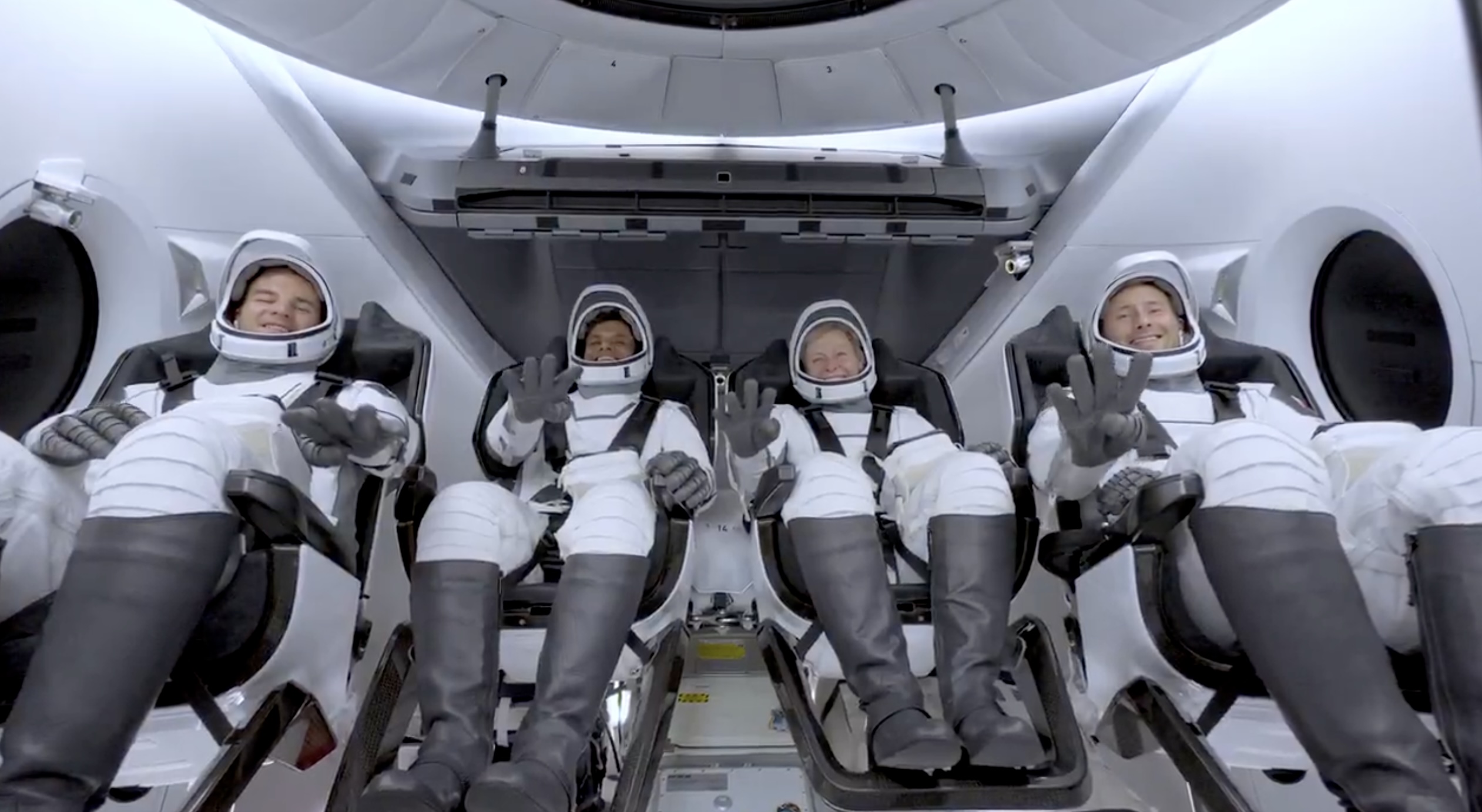
SpaceX launched the Falcon 9 rocket kickstarting Axiom Space’s Ax-4 mission to the International Space Station (ISS). Axiom’s Ax-4 mission is led by a historic international crew and lifted off from Kennedy Space Center’s Launch Complex 39A at 2:31 a.m. ET on June 25, 2025.
The Ax-4 crew is set to dock with the ISS around 7 a.m. ET on Thursday, June 26, 2025. Axiom Space, a Houston-based commercial space company, coordinated the mission with SpaceX for transportation and NASA for ISS access, with support from the European Space Agency and the astronauts’ governments.
The Ax-4 mission marks a milestone in global space collaboration. The Ax-4 crew, commanded by U.S. astronaut Peggy Whitson, includes Shubhanshu Shukla from India as the pilot, alongside mission specialists Sławosz Uznański-Wiśniewski from Poland and Tibor Kapu from Hungary.
“The trip marks the return to human spaceflight for those countries — their first government-sponsored flights in more than 40 years,” Axiom noted.
Shukla’s participation aligns with India’s Gaganyaan program planned for 2027. He is the first Indian astronaut to visit the ISS since Rakesh Sharma in 1984.
Axiom’s Ax-4 mission marks SpaceX’s 18th human spaceflight. The mission employs a Crew Dragon capsule atop a Falcon 9 rocket, designed with a launch escape system and “two-fault tolerant” for enhanced safety. The Axiom mission faced a few delays due to weather, a Falcon 9 leak, and an ISS Zvezda module leak investigation by NASA and Roscosmos before the recent successful launch.
As the crew prepares to execute its scientific objectives, SpaceX’s Ax-4 mission paves the way for a new era of inclusive space research, inspiring future generations and solidifying collaborative ties in the cosmos. During the Ax-4 crew’s 14-day stay in the ISS, the astronauts will conduct nearly 60 experiments.
“We’ll be conducting research that spans biology, material, and physical sciences as well as technology demonstrations,” said Whitson. “We’ll also be engaging with students around the world, sharing our experience and inspiring the next generation of explorers.”
SpaceX’s Ax-4 mission highlights Axiom’s role in advancing commercial spaceflight and fostering international partnerships. The mission strengthens global space exploration efforts by enabling historic spaceflight returns for India, Poland, and Hungary.
News
Starlink Cellular’s T-Mobile service to grow with third-party app data
From Oct 2025, T-Satellite will enable third-party apps in dead zones! WhatsApp, X, AccuWeather + more coming soon.

Starlink Cellular’s T-Mobile service will expand with third-party app data support starting in October, enhancing connectivity in cellular dead zones.
T-Mobile’s T-Satellite, supported by Starlink, launches officially on July 23. Following its launch, T-Mobile’s Starlink Cellular service will enable data access for third-party apps like WhatsApp, X, Google, Apple, AccuWeather, and AllTrails on October 1, 2025.
T-Mobile’s Starlink Cellular is currently in free beta. T-Satellite will add MMS support for Android phones on July 23, with iPhone support to follow. MMS support allows users to send images and audio clips alongside texts. By October, T-Mobile will extend emergency texting to all mobile users with compatible phones, beyond just T-Mobile customers, building on its existing 911 texting capability. The carrier also provides developer tools to help app makers integrate their software with T-Satellite’s data service, with plans to grow the supported app list.
T-Mobile announced these updates during an event celebrating an Ookla award naming it the best U.S. phone network, a remarkable turnaround from its last-place ranking a decade ago.
“We not only dream about going from worst to best, we actually do it. We’re a good two years ahead of Verizon and AT&T, and I believe that lead is going to grow,” said T-Mobile’s Chief Operating Officer Srini Gopalan.
T-Mobile unveiled two promotions for its Starlink Cellular services to attract new subscribers. A free DoorDash DashPass membership, valued at $10/month, will be included with popular plans like Experience Beyond and Experience More, offering reduced delivery and service fees. Meanwhile, the Easy Upgrade promotion targets Verizon customers by paying off their phone balances and providing flagship devices like the iPhone 16, Galaxy S25, or Pixel 9.
T-Mobile’s collaboration with SpaceX’s Starlink Cellular leverages orbiting satellites to deliver connectivity where traditional networks fail, particularly in remote areas. Supporting third-party apps underscores T-Mobile’s commitment to enhancing user experiences through innovative partnerships. As T-Satellite’s capabilities grow, including broader app integration and emergency access, T-Mobile is poised to strengthen its lead in the U.S. wireless market.
By combining Starlink’s satellite technology with strategic promotions, T-Mobile is redefining mobile connectivity. The upcoming third-party app data support and official T-Satellite launch mark a significant step toward seamless communication, positioning T-Mobile as a trailblazer in next-generation wireless services.
-

 Elon Musk2 weeks ago
Elon Musk2 weeks agoTesla investors will be shocked by Jim Cramer’s latest assessment
-

 News2 days ago
News2 days agoTesla debuts hands-free Grok AI with update 2025.26: What you need to know
-

 Elon Musk4 days ago
Elon Musk4 days agoxAI launches Grok 4 with new $300/month SuperGrok Heavy subscription
-

 Elon Musk6 days ago
Elon Musk6 days agoElon Musk confirms Grok 4 launch on July 9 with livestream event
-

 News1 week ago
News1 week agoTesla Model 3 ranks as the safest new car in Europe for 2025, per Euro NCAP tests
-

 Elon Musk2 weeks ago
Elon Musk2 weeks agoxAI’s Memphis data center receives air permit despite community criticism
-

 News4 days ago
News4 days agoTesla begins Robotaxi certification push in Arizona: report
-

 News2 weeks ago
News2 weeks agoTesla sees explosive sales growth in UK, Spain, and Netherlands in June

